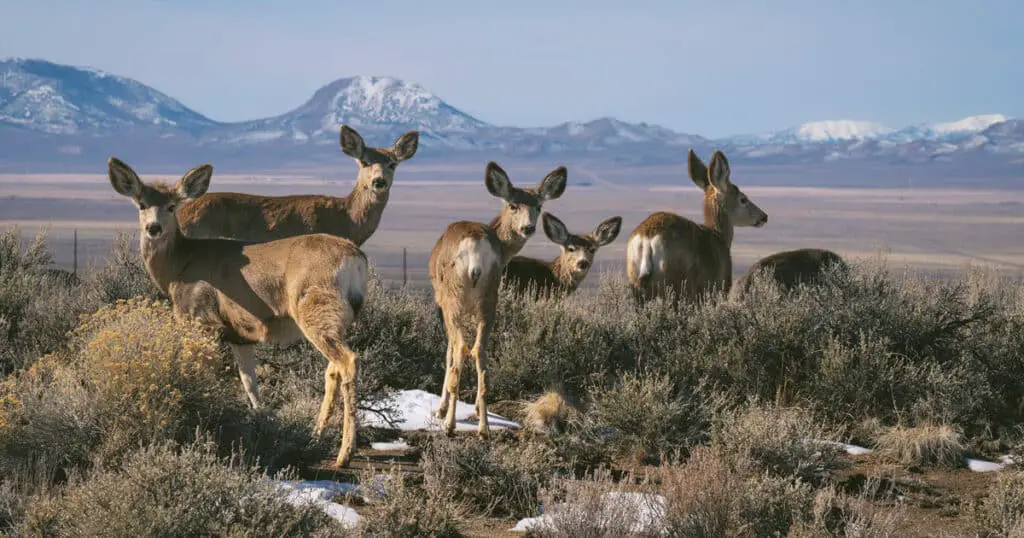Mule deer are one of the most common species of deer in North America. They live primarily on the western side of the Rocky Mountains and Continental Divide. The mule deer population varies from state to state. Some states have much higher concentrations of mule deer than others, mainly because of climate. Let’s learn about mule deer population by state.
Here we’ll talk about:
- Which state has the most mule deer?
- Are there mule deer in all 50 states?
- Which state has the biggest mule deer?
- Best mule deer hunting states
- Mule deer population history in the United States
Which State has the Most Mule Deer?
While no one knows for sure, Colorado probably has the highest population of mule deer. That state has more mule deer trophies per year than any other state, and Colorado’s mountainous terrain is well-suited for this type of deer.
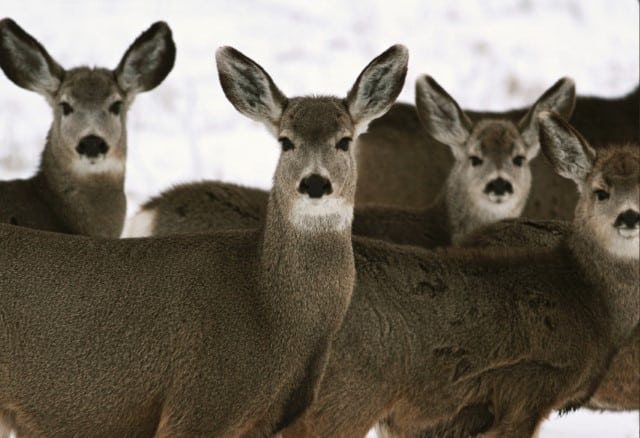
States with mountains are more likely to have mule deer. In addition to Colorado, Utah and Idaho have high populations of mule deer.
Why is there uncertainty about the numbers? Well, measuring mule deer populations is difficult. Population numbers vary from year to year and can be influenced by a number of factors.
That’s why most mule deer statistics come from hunting numbers. And these numbers aren’t necessarily added to a national database.
Mule deer migrate seasonally. During the winter, mule deer hang out in valleys and flat areas.
They seek higher elevations during the summer months and will climb the mountains. There are mule deer subspecies that don’t migrate as much as others.
Here is a ranked chart showing the states with the largest mule deer populations.
| Rank By Mule Deer Population | State |
|---|---|
| 1. | Colorado |
| 2. | Utah |
| 3. | Idaho |
| 4. | Wyoming |
| 5. | Nevada |
| 6. | Arizona |
| 7. | New Mexico |
| 8. | Washington |
| 9. | Kansas |
| 10. | Montana |
Are There Mule Deer in all 50 States?
No, there aren’t mule deer in all 50 States. As we mentioned earlier, mule deer tend to live west of the Rocky Mountains.
There are some exceptions, and mule deer have been known to wander into other areas. But these tend to be individual bucks.
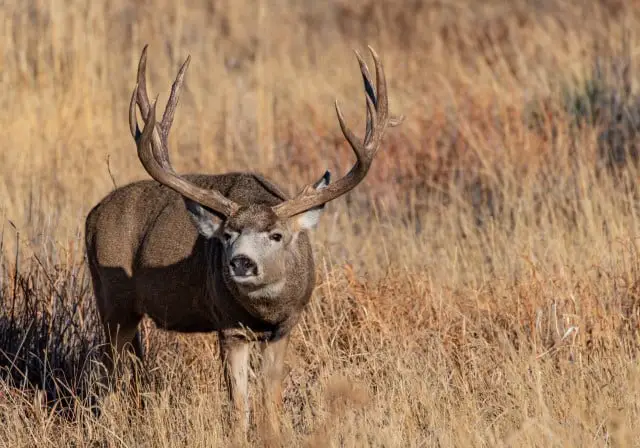
Aside from the states we listed in the chart, mule deer can be found in Texas, Oregon, South Dakota, Nebraska, and California. However, the mule deer populations in these states tend to be much smaller than in the states on the list.
Mule deer can also be found in the western parts of Canada and Mexico. Mule deer are not native to other parts of the world like Europe, Africa, or Asia.
Of course, mule deer can be found in captivity in areas where they’re not native. These numbers are not included in population statistics.
While most states don’t have mule deer, there are many other deer species all over the country.
Whitetail deer are the most prevalent.
Elk and moose are other deer species found on the continent. States like Alaska and Maine have significant moose populations.
Whitetail deer is the most common species of deer in North America, but they don’t usually live in mule deer habitats. They tend to live east of the Rocky Mountains.
There are some areas where there are both whitetail and mule deer. Texas, which has the highest whitetail deer population of any state, also has mule deer.
However, the whitetail deer population significantly outnumbers the mule deer population.
You can read more about the differences between mule deer and whitetail deer here.
There are native deer (of at least one species) in all states except Hawaii. However, deer have become an invasive species in Hawaii because humans have introduced them there.
These non-native deer interfere with the ecosystem and threaten the existence of animals and plants native to the state.
Which State has the Biggest Mule Deer?
The average size of mule deer in each state is hard to measure. It changes from year to year.
Since Colorado has the most mule deer, it isn’t surprising that they tend to have the most trophies and record-breaking mule deer.
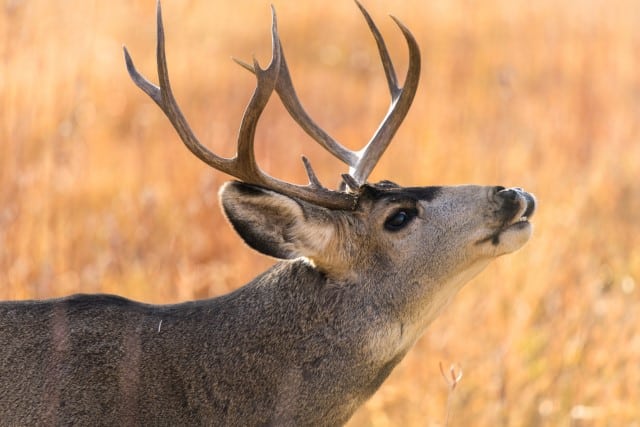
Hunting is also more popular in Colorado than in some of the other states. So, it’s possible that there are some even larger mule deer in states like California and Montana that haven’t been recorded.
Hunting records can sometimes be misleading about deer size. Hunters measure their trophies by a buck’s antlers.
Generally, antler size corresponds to weight and height. However, there are some exceptions.
Hypothetically, a buck could have very large antlers but not weigh very much. A deer’s weight at the time it is shot is also usually different than when it is actually measured.
When a deer is shot, the hunter will usually field dress the deer, removing the intestines on site, thus reducing the weight. The antlers will also shed some weight.
By the time the deer actually makes it to the site of measurement, it won’t be as big as it was.
Best Mule Deer Hunting States
Colorado is the most popular state for mule deer hunting. The state is also a popular destination for elk and whitetail hunting.
There is a lot of hunting infrastructure designed for out-of-state hunters. However, that also means there’s a lot of competition.
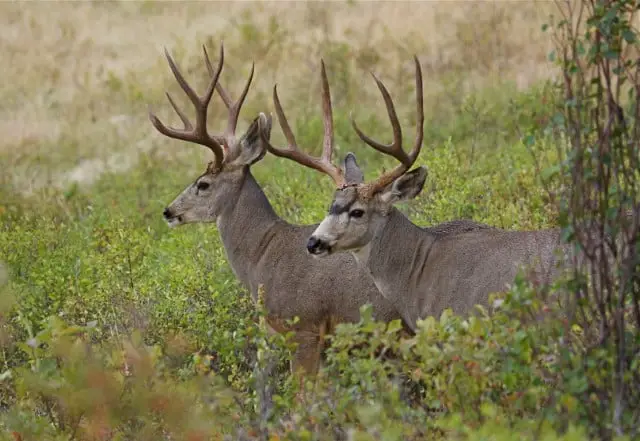
That’s why heading to a state like Washington or Oregon could be a better choice. There isn’t as much hunting in these states but there’s nothing stopping you from hunting there (as long as you get the right licensing).
Canada and Mexico are other popular hunting spots. Mexico has fewer hunting regulations than the US, so it could be a good spot if you live in a state with heavy regulations. Each state has its own hunting laws, and some states are not as good for deer hunting.
You must be familiar with the hunting laws of where you’re hunting before you start your expedition. Failing to abide by hunting laws could get you in trouble.
It’s also dangerous. Hunting laws exist for your safety as much as animal welfare.
Hunting regulations help control the natural population levels of the animals. Illegal hunting threatens the natural balance of deer populations.
Mule deer have faced extinction due to over-hunting and development.
Mule Deer Population History in the US
Currently, there are around 7 million mule deer in the United States. Around 1900, the mule deer population was much smaller. In fact, this species almost went extinct.
Fortunately, authorities enacted wildlife conservation efforts that ended up saving the species.
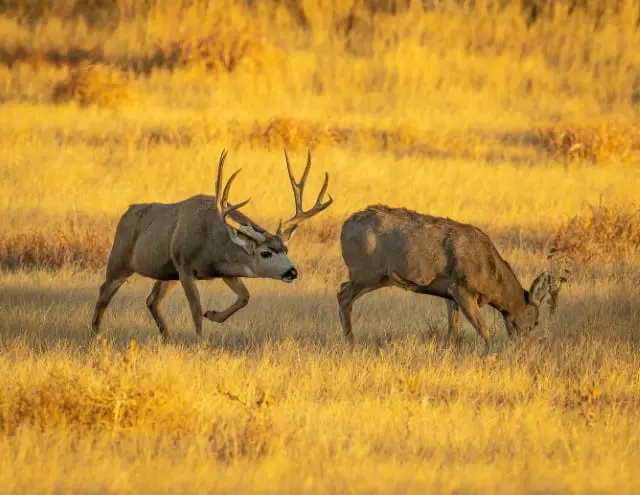
It’s difficult to measure exact population numbers from before 1900. Earlier records are unreliable or don’t exist.
However, from fossil evidence and other archeological records, we can say with good certainty that the deer population started decreasing after Europeans settled in North America.
Hunting and colonial development disturbed deer’s habitats. 20th-century wildlife conservation efforts are still in place.
That’s why the mule deer population is now approximately the same as it was before Europeans arrived in North America.
The resurgence of deer in North America proves that conservation efforts work and are important to the perseveration of the environment.
Final Thoughts About the Mule Deer Population in the US
In summary, mule deer are one of the most common deer in North America.
However, they tend to live west of the Rocky Mountains. Most experts believe that Colorado has the highest mule deer population of any state in the United States.
This makes Colorado one of the most popular states for mule deer hunting. Other good states for hunting mule deer are Idaho, Utah, and Western states with smaller populations like Washington and Oregon.
Mule deer don’t live in all 50 states. East of the Rocky Mountains, the most common type of deer is the whitetail deer.
Whitetail is the most common deer species in North America. Behind whitetail deer, mule deer is probably the most popular deer species for hunting.

